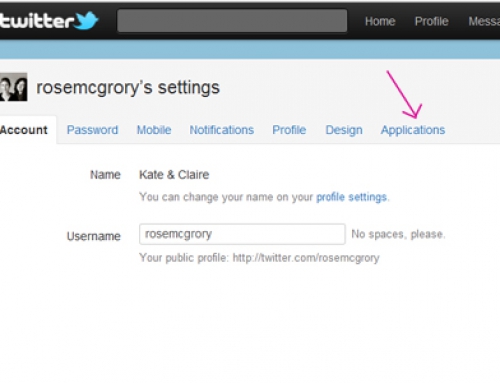In our second article looking at the cultural challenges which social media poses to an organisation, we’re looking at guidelines, policies and empowerment: how to allow your employees to interact authentically in the online world.
What’s the problem?
There’s a fundamental tension between the way that communication between an organisation and its audience (customers, peers, even shareholders) has traditionally been managed, and the type of communication which succeeds in the social media environment.
Until recently, all communication was “official”: provided through relatively formal channels like newsletters, permanent website content or magazine editorials. These could be crafted over days or even weeks, conformed to a particular set of norms, and would usually be issued only by a small number of approved individuals in the marketing department. They would then often be signed off by one or more senior managers, allowing close control over everything which left the building in that organisation’s name.
Applying literally any element of that model to a social media presence though, is a recipe for – well, if not disaster, certainly not success.
What needs to change?
Firstly, you’re not always the originator of the “story”. Social media is partly about engaging in, and responding to, existing discussions, which may or may not relate directly to your product or service. You don’t get to decide what gets discussed, let alone what will be said about it.
Secondly, things move on too quickly for the “sign off” hierarchy to be viable. Occasionally there might be time for a quick internal call to sense check some proposed content, but a day or two’s delay whilst waiting for someone to get around to reading and signing off an email is going to be the kiss of death to any conversation on social media.
And finally, and most importantly, content authored “by committee” just won’t resonate with individual users. Social media is primarily about individual, one to one interactions, but with a public dimension. For an organisation, that will always be a challenge to some extent; nobody wants to read a Facebook post authored by The Borg.
Whether you choose a social media community manager to represent you, or encourage a number of key staff to be active online in a professional capacity, they need to be able to make authentic connections. And that means expressing their own personality and opinions.
If this scares you, you probably need to have a good think about your recruitment policy – while not every job role requires amazing communication skills, if you don’t trust at least a handful of staff to act professionally whilst still being themselves (something that most people do in their office environment every day!) then you’re going to find social media very difficult to deal with.
We need a policy for that!
Which brings us to the topic of social media policies. We’re by no means anti-policy here, in fact we actively encourage our clients to have one. But its focus needs to be on supporting good interaction, not on suffocating it.
In our experience it’s relatively simple to define what you shouldn’t do on Twitter or Facebook – it pretty much boils down to good manners, the same professional standards you’d apply in the office, and avoiding a handful of sensitive topics. Most of the time, especially where there’s been a culture of always having “t”s crossed and “i”s dotted by managers, the challenge is in helping whoever is representing you online be confident in finding their own voice.
In general, the shorter and simpler the better – within reason. Zappos shoes, a US brand which is hugely successful online, has a policy consisting of just seven words: “Be real, and use your best judgement“. Which is all well and good for a young company whose employees are generally confident in the online world, but those who are less confident may appreciate a little more detailed guidance.
However, most of the examples often cited as good corporate social media policies are no more than a page or so long, and avoid getting into the level of detail which is going to start making people second-guess themselves. Specifically, try and avoid areas such as insisting everything that goes out is written in a particular “house style” (using specific types of language) – if for some reason you really need all your content to be that consistent, you need to employ a single social media editor / manager who can take ideas from the rest of the organisation and copywrite them in the required way. It’s still not recommended though – far better to let your community manager host the party in their own language!
This article has some good examples, and also highlights a few additional issues to consider, such as ownership of a hybrid professional / personal account if that user leaves the organisation.
Keeping it in context
“Doing a policy” is often the first port of call because it’s a nice, tidy way of putting things in the “done” box. But it’s also important to ensure that everyone relevant understands the context – what the wider company objectives are for social media, and what they are ultimately contributing to. The more information they have, the easier it is for them to interact confidently and constructively – and the more confident the organisation can be in letting them do so.







Leave A Comment